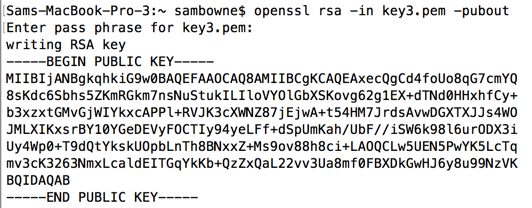The realm of cryptography continually intrigues both professionals and lay enthusiasts. Among the myriad of cryptographic techniques, RSA—an acronym for Rivest–Shamir–Adleman—has gained prominence since its inception in the late 1970s. While it serves as a cornerstone for secure communications, a common curiosity persists: can one truly derive the private key from RSA given only the public key? This inquiry serves as a gateway to a complex interplay of mathematics, computational theory, and the philosophical implications of encryption itself.
At its core, RSA relies on the mathematical principles of prime factorization. The security it offers is predicated on the assumption that while multiplying large prime numbers is computationally trivial, the reverse process—factoring their product—is profoundly laborious for sufficiently large numbers. When a user generates an RSA key pair, they create a public key, which includes the modulus and the public exponent, and a private key, which is used for decryption. The challenge, then, lies in the ability to extract the private key from the public parameters.
To embark on this journey, understanding the RSA algorithm’s mechanics is essential. The scheme involves the selection of two distinct prime numbers, ( p ) and ( q ). These primes are multiplied to produce ( n ), the modulus, forming the bedrock of both keys. Moreover, an integer ( e ) is chosen as the public exponent, typically a small prime like 65537 for efficiency in encryption.
The next critical step involves calculating ( phi(n) )—Euler’s totient function, representing the count of integers up to ( n ) that are coprime to ( n ). The private key ( d ) is derived as the modular multiplicative inverse of ( e ) under modulo ( phi(n) ). This relationship creates a secure asymmetric cryptography system, where possession of the public key does not equate to possession of the private key.
However, the theoretical assurance of RSA’s strength is continuously tested. The observation that extracting the private key from the public key remains unfeasible for large integers underpins a broader challenge: the feasibility of computational resources and advancements in algorithms. Herein lies the fascination—despite the robustness of RSA, the allure of attempting to breach its defenses reveals deeper concerns about the future of cryptography.
Take, for instance, the concept of the “factoring problem.” While current encryption standards depend on its complexity, advancements in quantum computing raise potential disruptions. Shor’s algorithm, capable of efficiently factoring integers on a quantum computer, could imperil the security RSA provides. This prospect invites speculation regarding the evolution of encryption methods and the ongoing arms race between computational power and cryptographic techniques.
Additionally, the strength of RSA is inherently tied to the sizes of ( p ) and ( q ). Contemporary best practices recommend using key lengths of at least 2048 bits to deter brute-force attacks. Yet, as computational capabilities grow, the longevity of any cryptographic technique remains tenuous. The development of new algorithms and the refinement of existing methods seek to bolster security against evolving threats.
The demystification of the RSA private key presents a perplexing paradox. On one hand, it reinforces the significance of resource allocation toward researching quantum-resistant algorithms; on the other hand, it invigorates discussions about ethical standards in cryptography. The balance between privacy, security, and the potential misuse of cryptographic tools is a critical discourse confronting modern society. Unfettered access to cryptographic keys—whether through legitimate channels or nefarious means—can precipitate grave implications in matters of personal privacy and national security.
Furthermore, the exploration of RSA’s intricacies necessitates an acknowledgment of potential vulnerabilities inherent in practical implementations. Issues such as poor random number generation, weak key management practices, and side-channel attacks may inadvertently compromise the effectiveness of RSA. Such vulnerabilities do not arise from the RSA algorithm itself but underscore human error and oversight in its application.
As societies become increasingly digitized, addressing the challenge of key extraction transcends mere curiosity. In navigating this complex landscape, it becomes imperative to cultivate an understanding of the ramifications of cryptographic reliance. Will RSA endure as a bastion against data interception, or will its foundations be eroded by unforeseen advancements in technology? The path forward hinges on proactive engagement with cryptographic research, an unwavering commitment to innovation, and a continuous reassessment of ethical responsibilities linked to data security.
The observation that the private key seems beyond reach from the public counterpart serves as both a testament to the ingenuity of RSA and a clarion call to embrace vigilance in cryptography. As the digital epoch progresses, the conversation surrounding key extraction evolves, urging stakeholders—from technologists to policymakers—to engage in an informed dialogue about the future of secure communications.








Leave a Comment